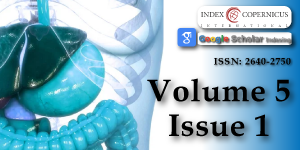AsdamarinTM relieves functional dyspepsia in healthy adults in only 7 days: A randomized, double-blind, placebo-controlled pilot study
Main Article Content
Abstract
Functional dyspepsia (FD) is a prevalent global health concern increasing with years. Inspired by the Traditional Chinese Medicine (TCM) liver-stomach disharmony syndrome in order to find a quick natural alternative treatment, a Ferula asafoetida-Silybum marianum (Asdamarin™) combined extract has been developed and proved its rapid efficiency and its safety with a 7-day randomized, double-blind, placebo-controlled pilot study (CTRI/2018/05/013993 dated 21/05/2018) conducted on 70 healthy human volunteers (aged 18–60 years) supplemented with 250 mg / twice a day of either a placebo or Asdamarin™. Subjects were evaluated from baseline to the end of the study (EOS) through changes in Gastrointestinal Symptom Rating Scale (GSRS), changes in Glasgow Dyspepsia Severity Score (GDSS) and changes in the short form of Nepean Dyspepsia Index (NDI-SF) for Quality of Life. Compared to the baseline a significant reduction (p < 0.001) of GDSS questionnaire score was noted in the Asdamarin™ group (from 5.66 ± 3.1 at baseline to 5.09 ± 2.8 at the End Of Study (EOS)) compared to placebo group (from 2.77 ± 1.3 baseline to 2.69 ± 1.3 EOS), a significant decrease (p < 0.001) of GSRS score noted in the Asdamarin™ group (from 32.11 ± 8.6 baseline to 19.11 ± 5.4 EOS) compared to the placebo group (from 25.23 ± 3.6 baseline to 23.2 ± 4.9 EOS), and a significant reduction (p < 0.001) of NDI-SF scoring was noted in the Asdamarin™ group (from 15.74 ± 4.1 baseline to 11.54 ± 2.1 EOS) compared to placebo group (from 12.54 ± 3.2 baseline to 11.63 ± 2.6 EOS). Asdamarin™ has been found safe and very well tolerated during the study.
Article Details
Copyright (c) 2021 Daguet D, et al.

This work is licensed under a Creative Commons Attribution 4.0 International License.
Kumar A, Pate J, Sawant P. Epidemiology of functional dyspepsia. J Assoc Physicians India. 2012; 60: 9-12. PubMed: https://pubmed.ncbi.nlm.nih.gov/23155797/
Ford AC, Marwaha A, Sood R, Moayyedi P. Global prevalence of, and risk factors for, uninvestigated dyspepsia: a meta-analysis. Gut. 2015; 64: 1049-57. PubMed: https://pubmed.ncbi.nlm.nih.gov/25147201/
Talley N. Functional Dyspepsia: Advances in Diagnosis and Therapy. Gut Liver. 2017; 11: 349-357. PubMed: https://pubmed.ncbi.nlm.nih.gov/28452210/
Majeed M, Majeed S, Nagabhushanam K, Arumugam S, Pande A, et al. Evaluation of the Safety and Efficacy of a Multienzyme Complex in Patients with Functional Dyspepsia: A Randomized, Double-Blind, Placebo-Controlled Study. J Med Food. 2018; 21: 1120-1128. PubMed: https://pubmed.ncbi.nlm.nih.gov/30156436/
Zhao L, Wang T, Dong J, Chen A, Li G. Liver-stomach disharmony pattern: theoretical basis, identification and treatment. Tradit Chin Med Sci. 2018; 5: 53-57. Sciencedirect: https://www.sciencedirect.com/science/article/pii/S2095754818300085
Wang C, Zhu M, Xia W, Jiang W, Li Y. Meta-analysis of Traditional Chinese Medicine in treating functional dyspepsia of liver-stomach disharmony syndrome, J Trad Chin Med. 2012; 32: 515-522. PubMed: https://pubmed.ncbi.nlm.nih.gov/23427381/
Amalraj A, Gopi S. Biological activities and medicinal properties of Asafoetida: A review. J Tradit Complement Med. 2016; 7: 347-359. PubMed: https://pubmed.ncbi.nlm.nih.gov/28725631/
Gopi S, Amalraj A, Jude S, Varma K, Sreeraj TR, et al. Preparation, characterization and anti-colitis activity of curcumin-asafoetida complex encapsulated in turmeric nanofiber. Mater Sci Eng C Mater Biol Appl. 2017; 81: 20-31. PubMed: https://pubmed.ncbi.nlm.nih.gov/28887965/
Vijayasteltar L, Jismy IJ, Joseph A, Maliakel B, Kuttan R, et al Beyond the flavor: A green formulation of Ferula asafetida oleo-gum-resin with fenugreek dietary fibre and its gut health potential. Toxicol Rep. 2017; 4: 382-390. PubMed: https://pubmed.ncbi.nlm.nih.gov/28959663/
Bagheri SM, Hejazian SH, Dashti RMH. The relaxant effect of seed’s essential oil and oleo-gum-resin of Ferula Assa-foetida on isolated rat’s ileum. Ann Med Health Sci Res. 2014; 4: 238-241. PubMed: https://pubmed.ncbi.nlm.nih.gov/24761245/
Khazim K, Gorin Y, Cavaglieri RC, Abboud HE, Fanti P. The antioxidant silybin prevents high glucose-induced oxidative stress and podocyte injury in vitro and in vivo. Am J Physiol Renal Physiol. 2013; 305: F691–F700. PubMed: https://pubmed.ncbi.nlm.nih.gov/23804455/ et al
Aghazadeh S, Amini R, Yazdanparast R, Ghaffari SH. Anti-apoptotic and anti-inflammatory effects of Silybum marianum in treatment of experimental steatohepatitis. Exp Toxicol Pathol. 2011; 63: 569-74. PubMed: https://pubmed.ncbi.nlm.nih.gov/20471811/
Yao J, Zhi M, Minhu C. Effect of silybin on high-fat-induced fatty liver in rats. Braz J Med Biol Res. 2011; 44: 652-659. PubMed: https://pubmed.ncbi.nlm.nih.gov/21755261/
Illuri R, Venkataramana SH, Daguet D, Kodimule SP. Sub-acute and acute toxicity of Ferula asafoetida and Silybum marianum formulation and effect of the formulation on delaying gastric emptying. BMC Complement Altern Med. 2019; 19:159. PubMed: https://pubmed.ncbi.nlm.nih.gov/31277639/
Richter JE, Rubenstein JH. Presentation and Epidemiology of Gastroesophageal Reflux Disease. Gastroenterology. 2018; 154: 267-276. PubMed: https://pubmed.ncbi.nlm.nih.gov/28780072/
Oustamanolakis P, Tack J. Dyspepsia: organic versus functional. J Clin Gastroenterol. 2012; 46: 175-190. PubMed: https://pubmed.ncbi.nlm.nih.gov/22327302/
Isobe H, Sakai H, Satoh M, Sakamoto S, Nawata H. Delayed gastric emptying in patients with liver cirrhosis. Dig Dis Sci. 1994; 39: 983-987. PubMed: https://pubmed.ncbi.nlm.nih.gov/8174439/
Catanzaro R, Calabrese F, Occhipinti S, Anzalone MG, Italia A, et al. Nonalcoholic fatty liver disease increases risk for gastroesophageal reflux symptoms. Dig Dis Sci. 2014; 59: 1939-1945. PubMed: https://pubmed.ncbi.nlm.nih.gov/24718860/
Llorente C, Jepsen P, Inamine T, Wang L, Bluemel S, et al. Gastric acid suppression promotes alcoholic liver disease by inducing overgrowth of intestinal Enterococcus. Nat Commun. 2017; 16: 837-852. PubMed: https://pubmed.ncbi.nlm.nih.gov/29038503/
Kalaitzakis E. Gastrointestinal dysfunction in liver cirrhosis. World J Gastroenterol. 2014; 20: 14686–14695. PubMed: https://pubmed.ncbi.nlm.nih.gov/25356031/
Meng X, Li S, Li Y, Gan RY, Li HB. Gut Microbiota's Relationship with Liver Disease and Role in Hepatoprotection by Dietary Natural Products and Probiotics. Nutrients. 2018; 10: 1-21. PubMed: https://pubmed.ncbi.nlm.nih.gov/30297615/
Platel K, Srinivasan K. Influence of dietary spices or their active principles on digestive enzymes of small intestinal mucosa in rats. Int J Food Sci Nutr. 1996; 47: 55-59. PubMed: https://pubmed.ncbi.nlm.nih.gov/8616674/
Loguercio C, Festi D. Silybin and the liver: From basic research to clinical practice. World J Gastroenterol. 2011; 17: 2288–2301. PubMed: https://pubmed.ncbi.nlm.nih.gov/21633595/
Mala KN, Thomas J, Syam DS, Maliakel B, Krishnakumar IM. Safety and Efficacy of Ferula asafoetida in Functional Dyspepsia: A Randomized, Double-Blinded, Placebo-Controlled Study. Evid Based Complement Alternat Med. 2018: 1-11. PubMed: https://pubmed.ncbi.nlm.nih.gov/30224930/

